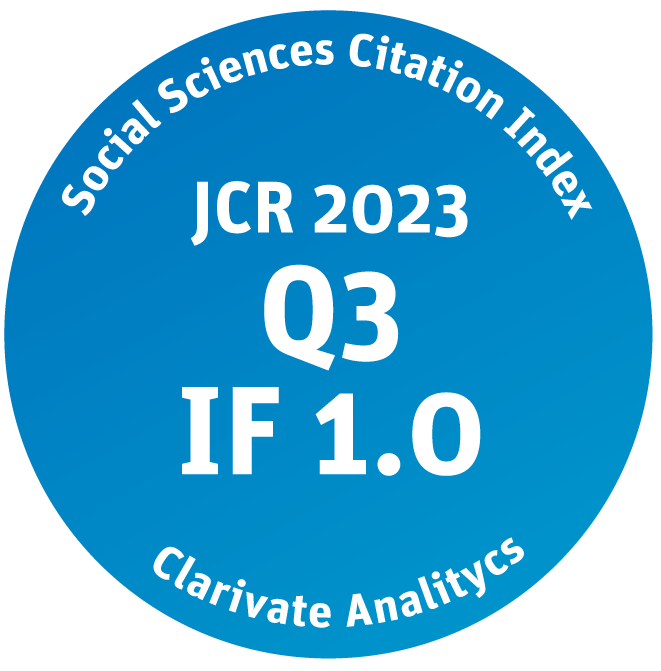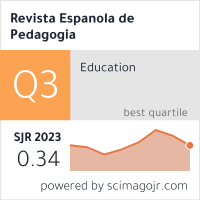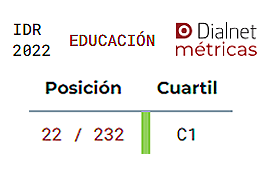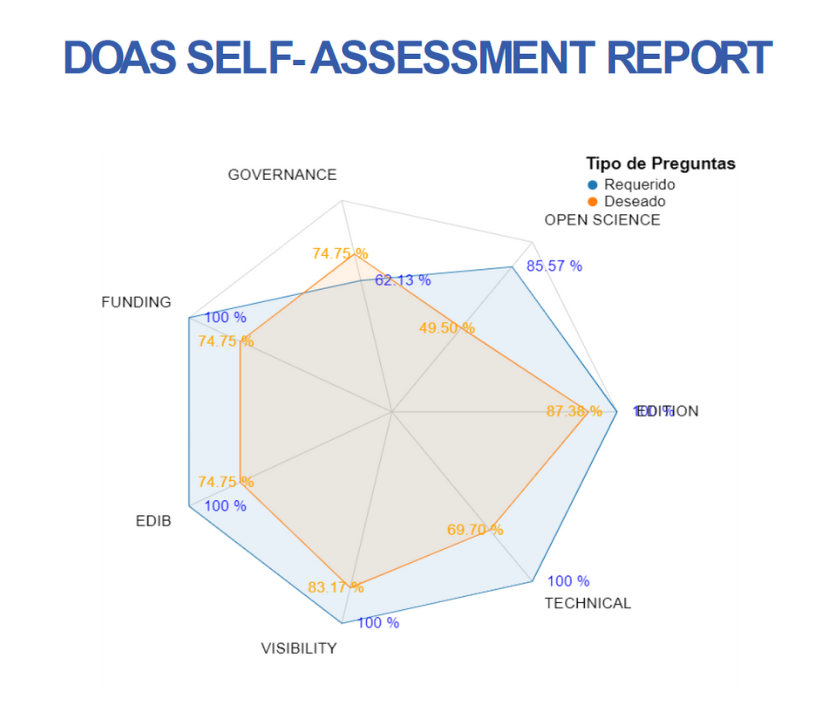Reseña bibliográfica: Mukherji, P. y Albon, D. (2022). Research methods in early childhood: An introductory guide [Métodos de investigación en la primera infancia: una guía introductoria]. SAGE Publications. 448 pp.
DOI
10.22550/2174-0909.4636
Abstract
Research in the field of early childhood education is a vital and constantly evolving area that requires effective and accessible tools for researchers. The work before us, Research methods in early childhood: An introductory guide, by Penny Mukherji and Deborah Albon, academics linked to London Metropolitan and Roehampton universities respectively, contributes to this specific need. This work has a structured and methodological focus that guides readers in the process of research in early childhood education, from conceptualisation to data analysis. Accordingly, the work’s introduction lays a solid foundation by defining concepts such as basic, applied, evaluation, action, and targeted research.
Through practical examples, an accessible writing style, and a focus on ethical considerations, this book facilitates understanding of complex concepts and fosters responsible and reflective research. It also includes complementary resources such as videos and glossaries that add to its value as a fundamental text, both for students and for professionals in the field. This edition includes two new chapters on quantitative and qualitative data analysis, updating the book’s content to reflect the latest methodological advances.
We will now synthesise the thematic nuclei that it covers. The book is divided into five parts addressing the essential aspects of the process of research on early childhood. The first one details the planning stages of a project, from developing a field of research to formulating questions and hypotheses, choosing an appropriate design and methods, and selecting the sample. It considers the importance of reliability and validity, and also considers probability and non-probability sampling techniques. It also explains what a research proposal is and the need of keeping a research diary and collaborating with a supervisor. Finally, this section explains the significance of doing a literature review, the elements that comprise a good review, and how to do literature reviews in both quantitative and qualitative research. It also provides strategies to identify, evaluate, and synthesise the existing literature.
The second part explores the different paradigms and principles that underpin research in early childhood education. It starts with positivist research, discussing the origins and meanings of positivism, the scientific method, and quantitative methodologies, including experimental and correlational methods. The opportunities and limitations of positivist research are considered, emphasising the need for validity and reliability. In addition to positivism, interpretative, critical, post-structuralist, and post-humanist theories are analysed, providing a broad overview of qualitative focuses. This section invites readers to consider multiple theoretical perspectives and focusses. It also underlines the importance of maintaining ethical practices throughout the whole of the process of research, encompassing inclusive research.
The third part details various research focusses that are applicable to early childhood education. It describes how to design and use surveys, providing guidelines for designing questionnaires and interpreting results. Next, it explains the steps in carrying out ethnographic field work and discusses its possibilities and limitations. It also reviews the history, design, and methods of case studies, noting their advantages and disadvantages. Lastly, it presents the role of the researcher in action research, describing the cycle of this methodology, the methods used, and the importance of reflection and continuous improvement in educational practice.
The fourth part considers specific data-collection techniques in depth. It provides a historical overview of observation, noting that it is fundamental in educational research and discussing appropriate situations, types and methods for recording information. It describes interviews, when to use them, the different types, and how to carry them out and record them, offering tools to obtain rich qualitative data. It considers the usefulness of questionnaires as well as types of question, design and administration. It analyses the use of documents, written texts, visual resources, and digital communication in research, emphasising the evaluation of documentary sources. It explores journalling as a tool for studying the self and for self-reflection. Finally, it describes creative methods for listening to young children, such as photography, play, telling stories, and the mosaic approach. This last part is undoubtedly a significant contribution by this work compared with other manuals on educational research. Furthermore, the possibilities and limitations of each technique are discussed, and illustrative practical examples are offered.
The final section of the book centres on how to analyse and present data that has been collected, relating to the type of data and their collection method. For this reason, the book explains quantitative data analysis methods (and how to present results) as well as qualitative methods, where it describes different focuses, including discourse analysis and grounded theory, as well as possibilities for using software packages. The text describes detailed strategies for statistical analysis and creating effective visual representations, along with tools designed to facilitate the interpretation of complex qualitative data. Finally, it emphasises the importance of communicating findings clearly and effectively to diverse audiences.
In view of the above, Research methods in early childhood: An introductory guide is not just of undoubted value for starting researchers but is also of great value for experienced academics in the field. More than a simple guide, the book is a fundamental reference work that researchers can turn to throughout their academic careers. Its structured focus not only helps researchers navigate methodological complexities, but it also provides experienced academics with a framework for perfecting their research methodologies and tackling emerging challenges.
The book includes a solid bibliography that enriches the reader’s comprehension and serves as a resource for further exploration. One especially notable section discusses case studies, where the book refers to groundbreaking works by authors such as Greig et al. (2013) or Arnold (2003), as well as more recent contributions by Denscombe (2021) and Schwandt and Gates (2017). This exhaustive compilation of references increases the text’s credibility and encourages readers to examine specific topics in greater depth, fostering critical enquiry and academic rigour.
In conclusion, Research methods in early childhood: An introductory guide is not only of note for its up-to-date content and practical focus, but also for its relevance in a constantly changing educational context. Its consideration of the ethical dimension, inclusion of diverse paradigms and methodologies, and orientation towards a reflective practice make this work an indispensable tool. As research into early childhood education advances, meeting contemporary challenges such as cultural diversity and the integration of digital technologies, this book offers researchers a solid and adaptable base. It not only provides guidance for students who are starting out in research, but it also offers experienced researchers a resource to deepen their knowledge and practices. In this sense, the text is a continuous reference resource that can accompany researchers throughout their careers, ensuring that their research projects are relevant and rigorous.
Citación recomendada | Recommended citation
Martínez Enríquez, P. (2025). Mukherji, P. & Albon, D. (2022). Research methods in early childhood: An introductory guide. SAGE Publications. 448 pp.. Revista Española de Pedagogía, 83(291). https://doi.org/10.22550/2174-0909.4636
Licencia Creative Commons | Creative Commons License
Esta obra está bajo una licencia internacional Creative Commons Atribución-NoComercial 4.0.
This work is licensed under a Creative Commons Attribution-NonCommercial 4.0 International License








